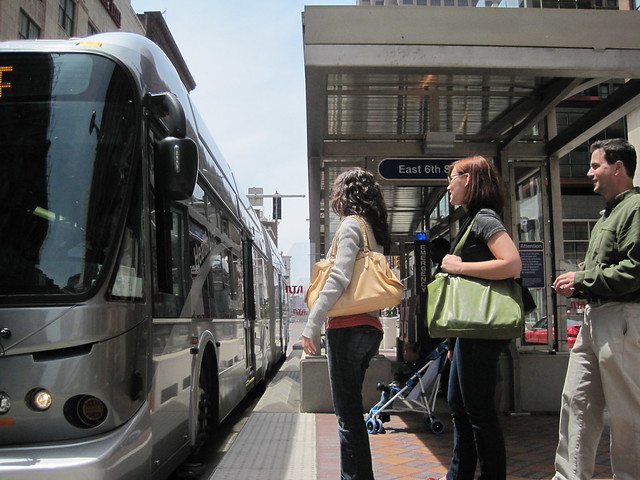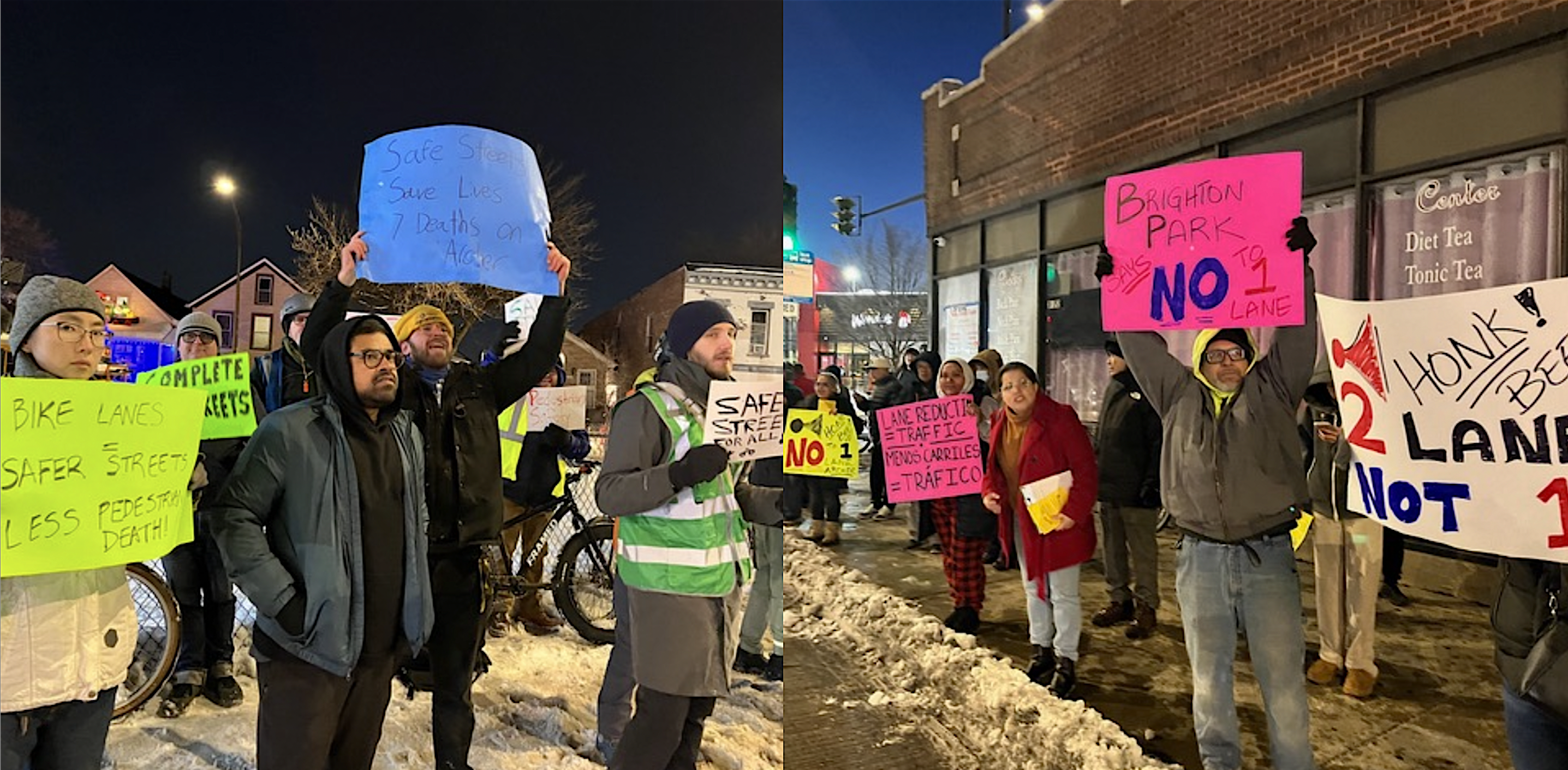
As I wrote this morning, the CTA is currently requiring bus operators to drive no faster than 3 mph when passing by the long, raised Loop Link bus rapid transit platforms. This is to ensure that the buses' rearview mirrors don't strike customers who are standing too close to the platform edge. Unfortunately, this has been a big factor in why bus speeds along the corridor, which opened on Sunday, have so far shown little or no improvement over the old 3 mph rush-hour average.
It turns out that the Greater Cleveland Regional Transit Authority had to deal with the same mirror issue when they launched that city's HealthLine BRT system back in 2008. Mike Schipper, a deputy general manager at GCRTA who was responsible for implementing the route, visited Chicago a few weeks ago, and he said the Loop Link layout has a lot of similarities to Cleveland's.
"It's also physically possible to be hit by a [bus] mirror if you're standing at the edge of the platform in Cleveland," Schipper said. "I'm tall, so I'm particularly aware of that." Like Loop Link, the HealthLine platforms have a tactile area by the edge.
However HealthLine bus operators don't have restrictions on how fast they can drive past or to the BRT platforms. Rather than slow to sub-walking speeds like their CTA counterparts, they sound a loud electric gong as they pull up to drop off and pick up passengers, according to Schipper. The noise is similar to that heard on a CTA 'L' train cars before the doors close.
Schipper said this strategy has been very successful in getting the attention of HealthLine customers, even if they're wearing earbuds. In the seven years the HealthLine has operated, there have been zero cases of passengers being injured by bus mirrors, he said.
It doesn't appear that the CTA is currently considering this tactic as an alternative to having drivers slow down to a glacial pace by the platforms, although spokeswoman Tammy Chase implied yesterday that the 3 mph speed limit will eventually be raised.
Today when I asked about the possibility of using a audible warning, CTA spokesman Jeff Tolman reiterated that the agency is looking at ways to educate customers about the importance of staying away from the Loop Link platform edge. He added that BRT operations will improve as all road users become familiar with the corridor.
Schipper said Chicagoans shouldn't get discouraged by the current sluggish Loop Link speeds. He noted that there was also a learning curve when Cleveland launched its system, and new HealthLink bus operators always drive much slower than veterans while they're getting used to navigating the corridor. "When you start these new things, there's always a shakeout period," he said.
Read more about Chicago's Loop Link mirror issue here.
![]()
Did you appreciate this post? Streetsblog Chicago is currently funded until April 2016. Consider making a tax-deductible donation through our PublicGood site to help ensure we can continue to publish next year.





